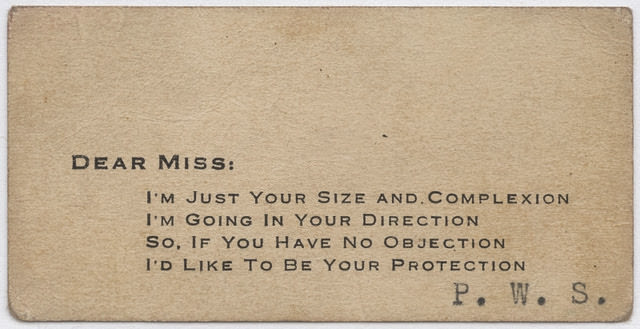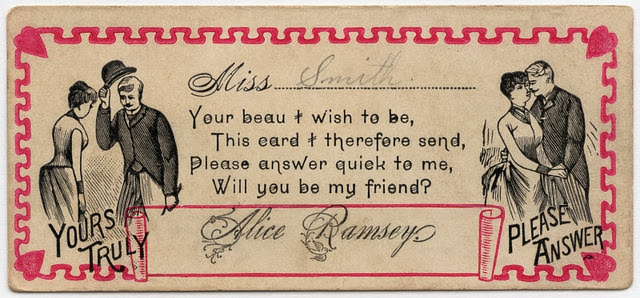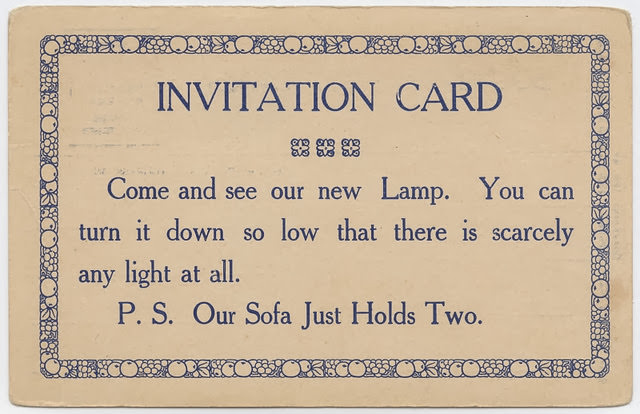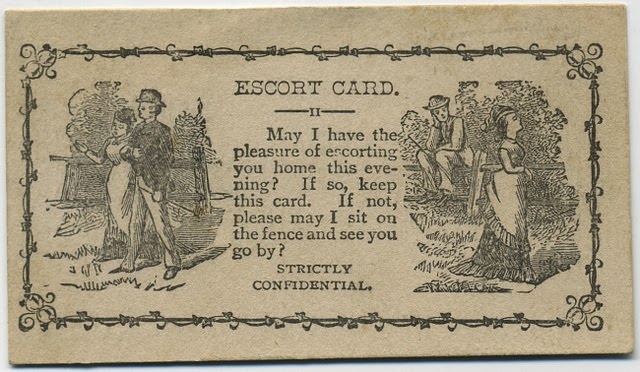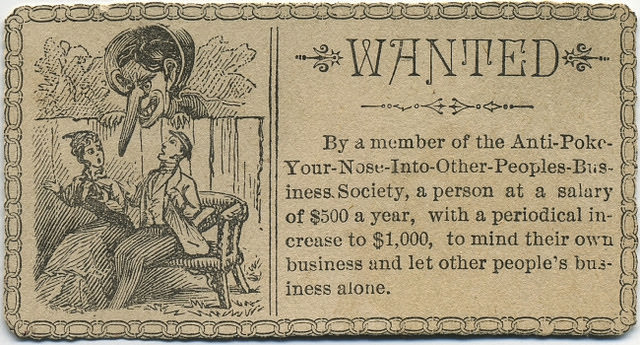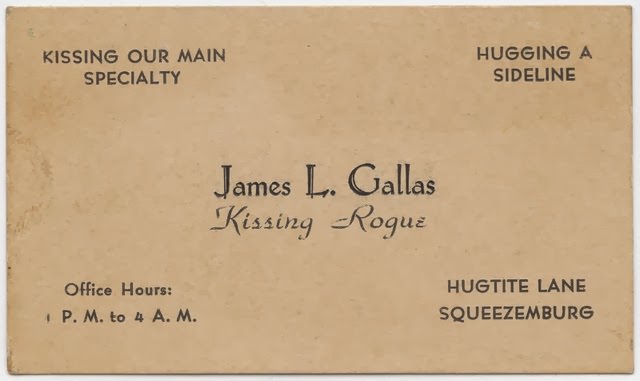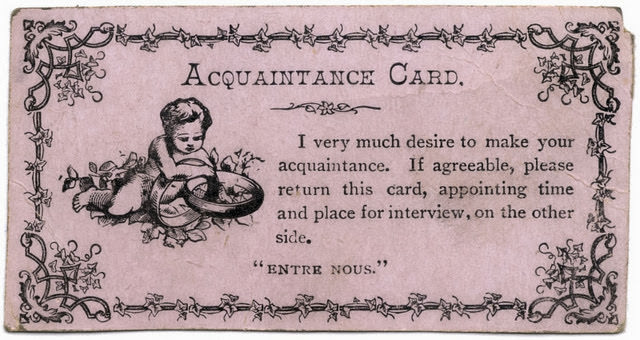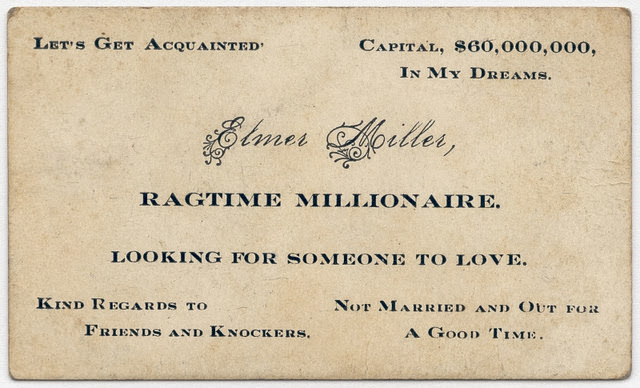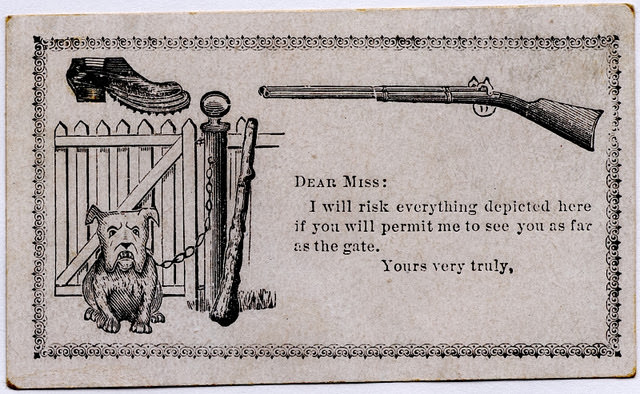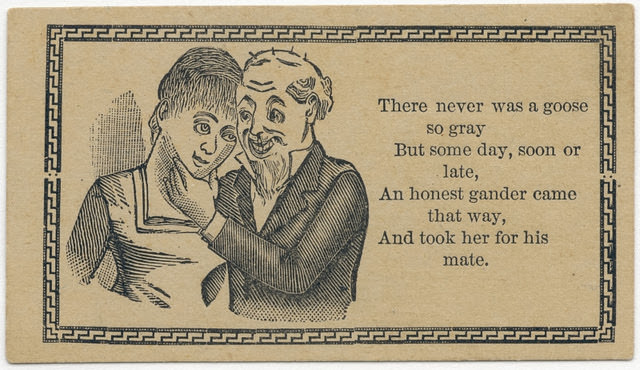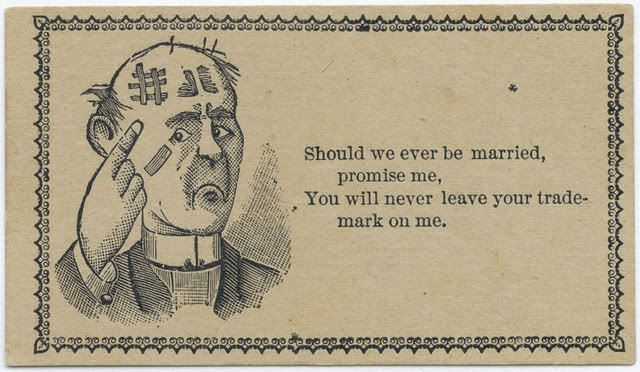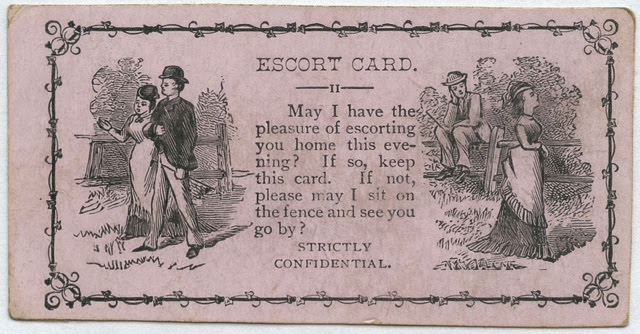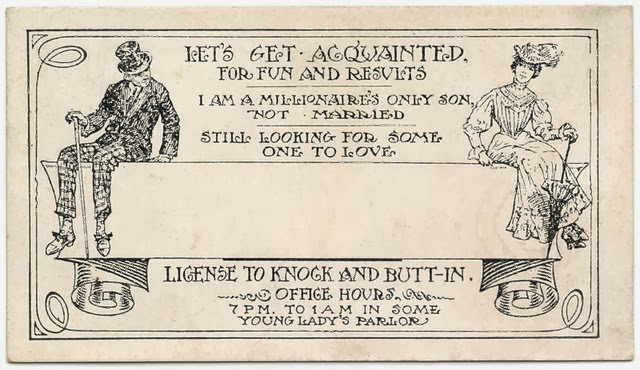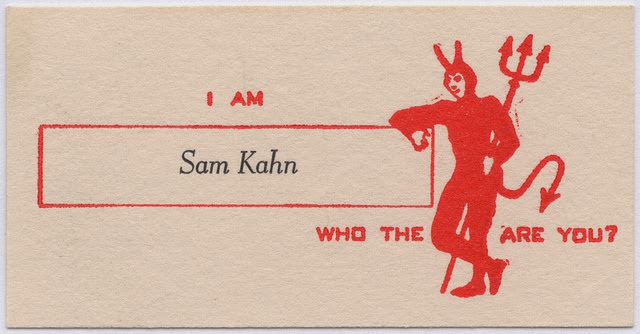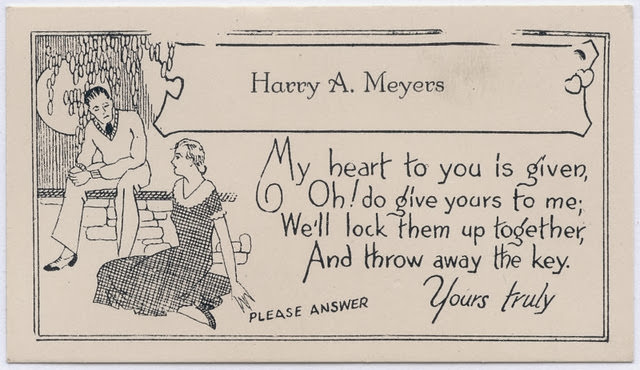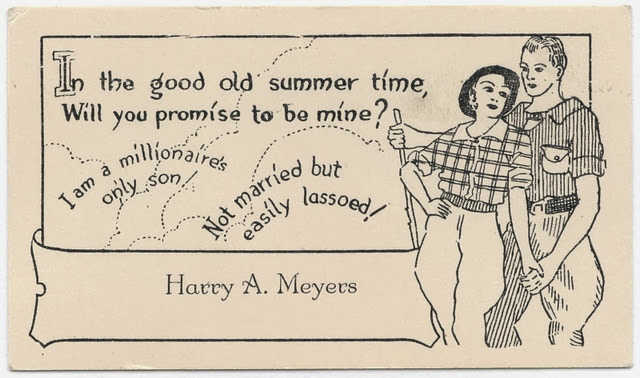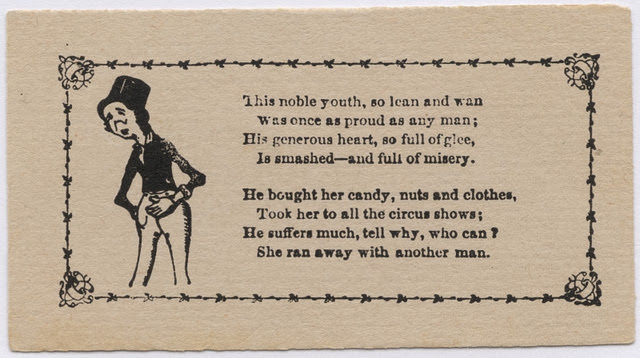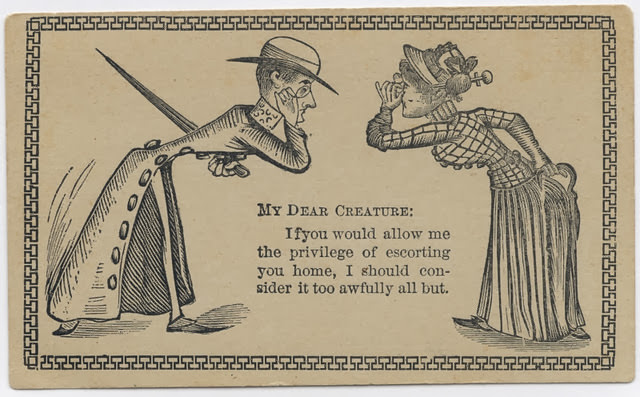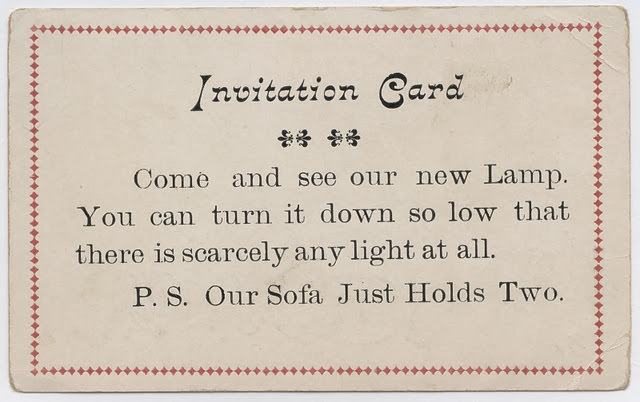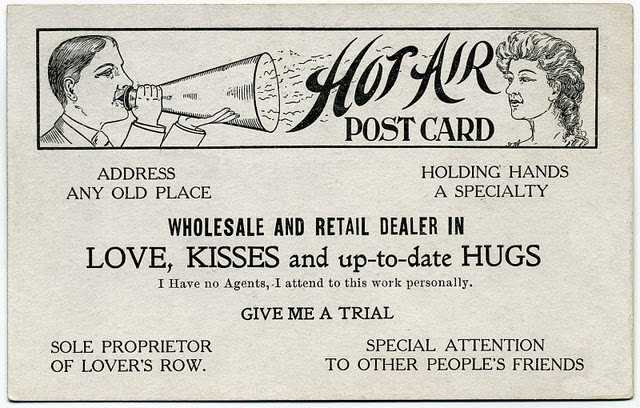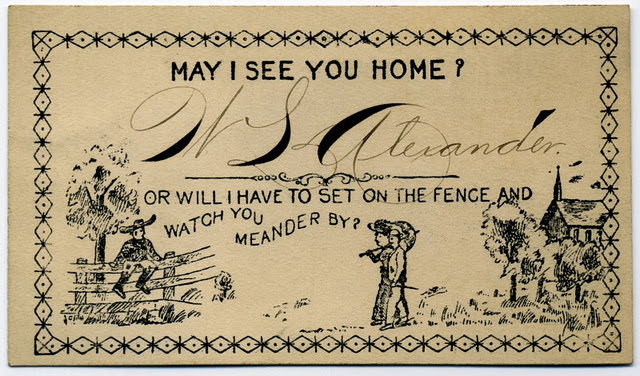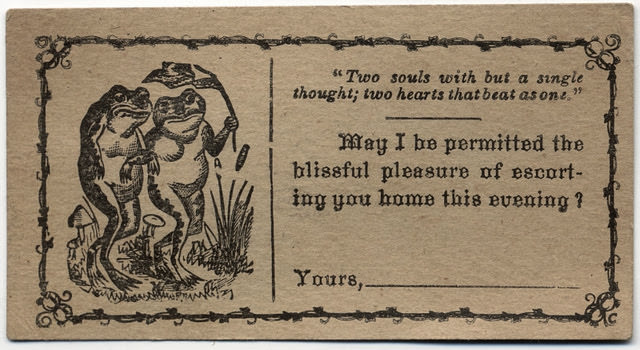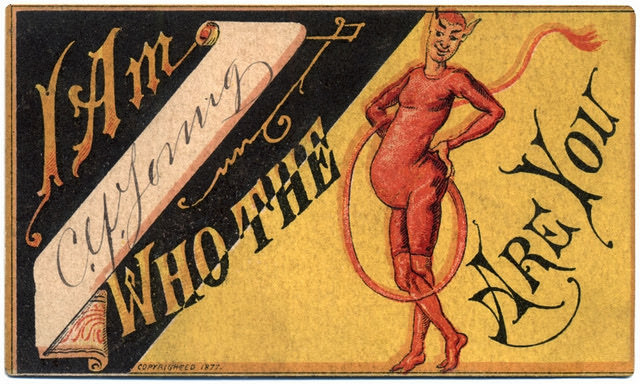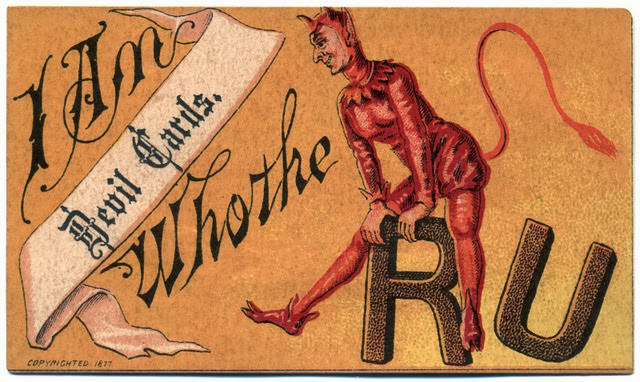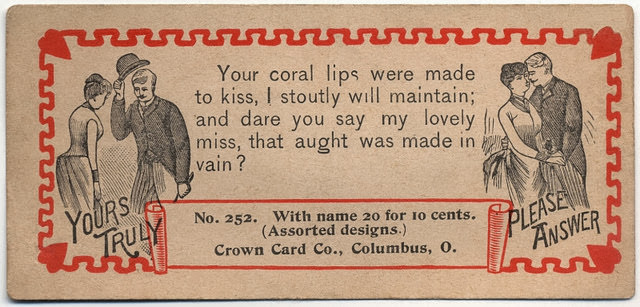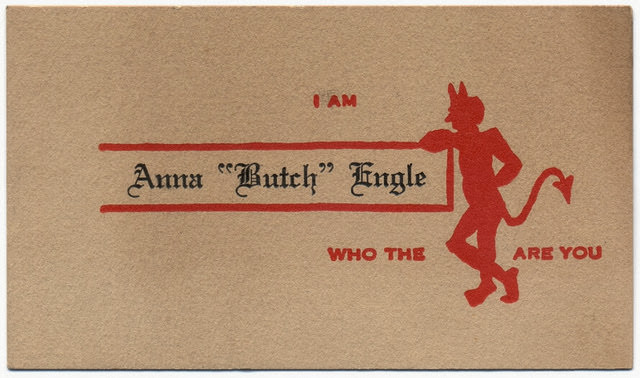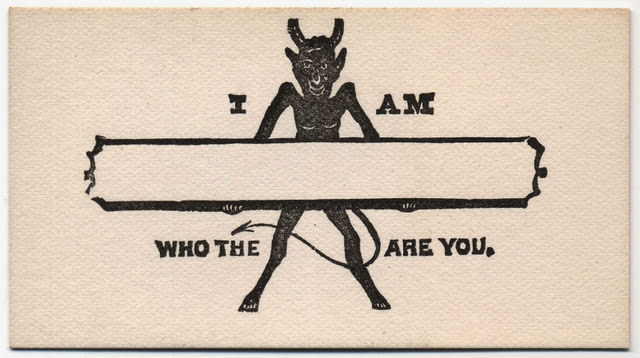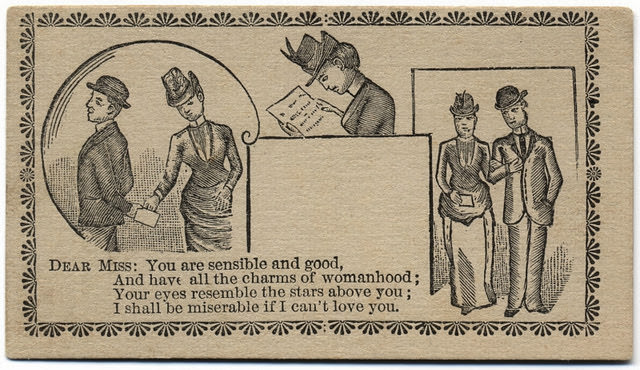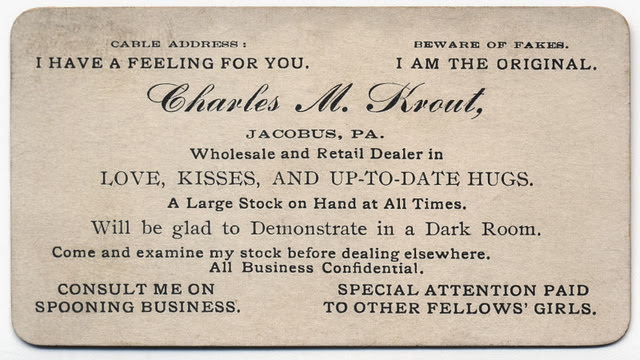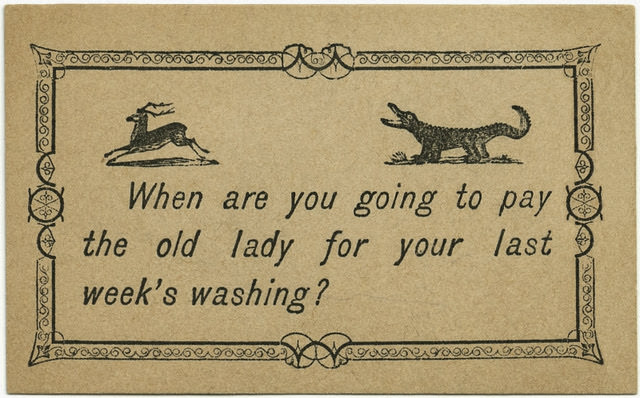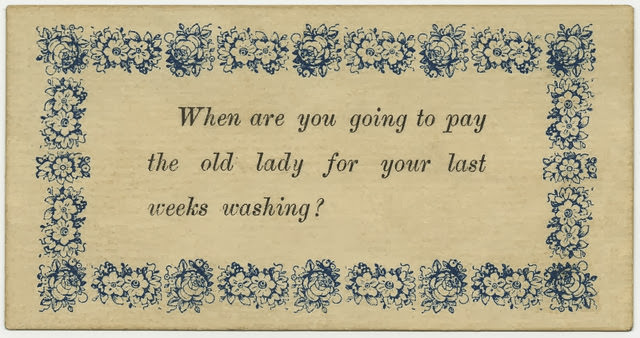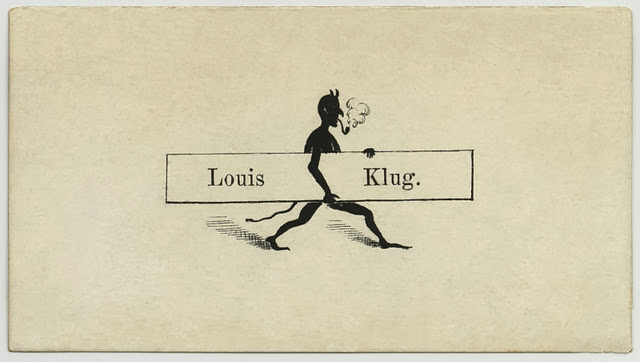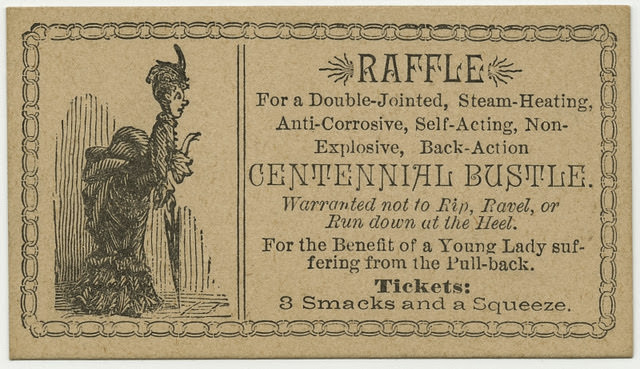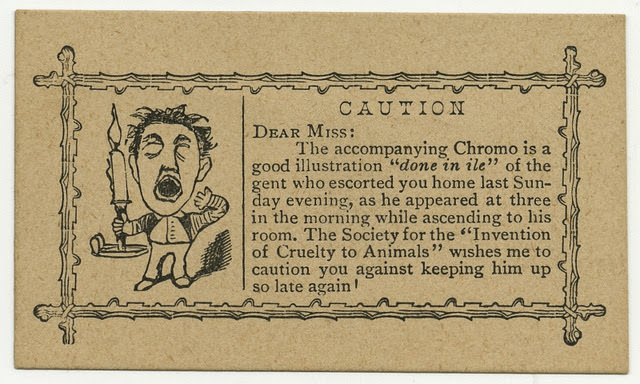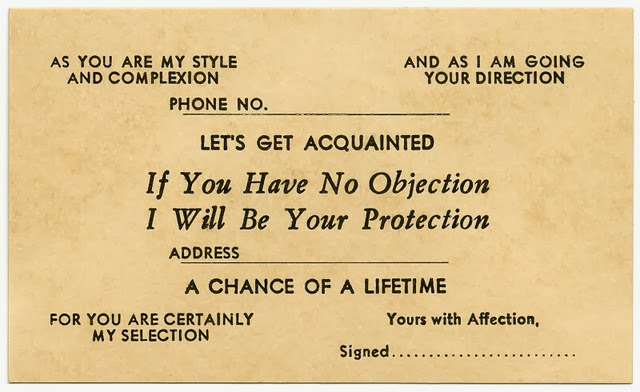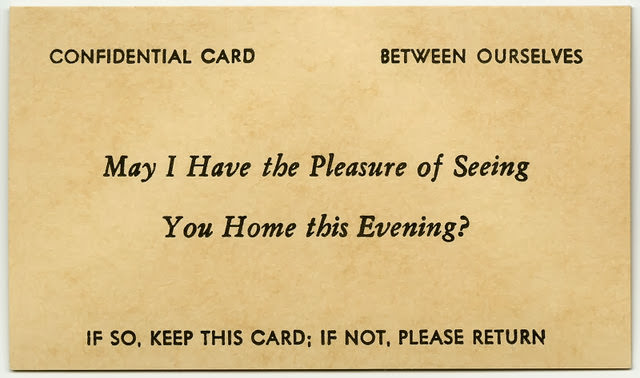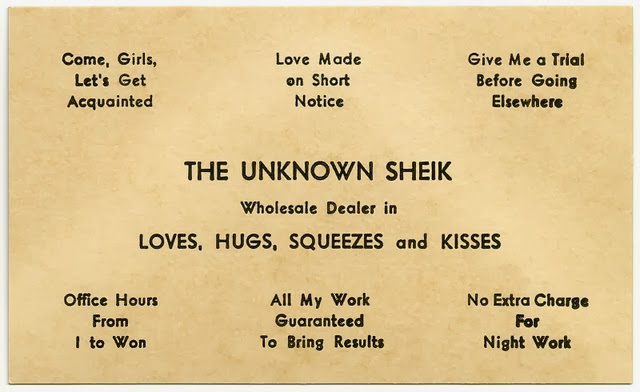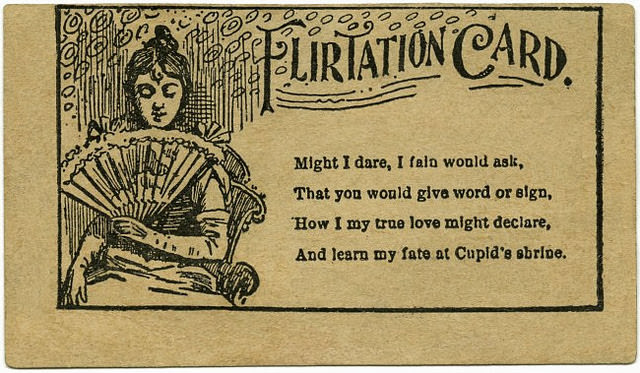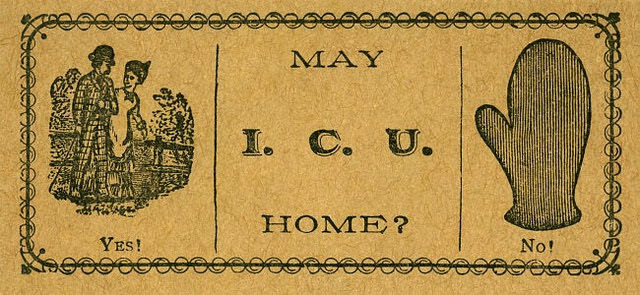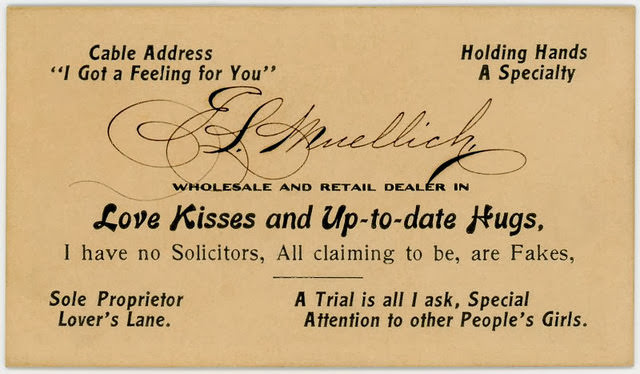In the 1870s and 1880s, strict social rules governed interactions between men and women. The formal calling card was a key tool for proper introductions. However, a more playful and direct alternative existed for gentlemen looking to start a conversation with a lady in a less stuffy manner: the acquaintance card. These cards used humor and bold statements to break the ice.
A Direct Approach to Courtship
Acquaintance cards were small, printed cards, often featuring a simple illustration, that a man could give to a woman who caught his eye. Unlike the formal calling card, which simply stated a name and was used for official social calls, the acquaintance card carried a specific, often humorous, message. The goal was to flirt and express interest in a lighthearted way.
Many cards were incredibly direct with their invitations. A common message would be, “May I see you home?” printed beneath a simple drawing of a house or a couple walking. Another might state, “I am dying to know you.” This bluntness was part of the humor, as it bypassed the era’s complex and indirect courting rituals.
Read more
Playful and Teasing Messages
A popular category of acquaintance cards featured teasing or slightly self-deprecating humor. One common card read, “May I have the pleasure of returning this card in person?”—a playful trick, as the recipient already had the card. Another might cheekily state, “You may have this card, but my heart is another matter.”
Some cards made light of the holder’s intentions. A card might carry the message, “I am positively smitten,” or “Be mine.” Other cards were designed to elicit a direct response, with one popular example stating, “If you are engaged, please have the kindness to return this card.” This put the recipient in the position of having to either accept the advance or go through the motion of returning the small piece of paper.
The Offer of an Escort
One of the most common functions of these cards was to offer a gentleman’s services as an escort. In an era when it was often improper for a woman to travel alone, this was a practical and forward way to suggest spending time together. A card would plainly state, “May I have the pleasure of escorting you to the Opera?” or simply, “Permit me to be your escort.”
These cards, sometimes called “escort cards,” often featured simple line drawings of a man offering his arm or a couple strolling together. The humor came from the directness of the proposition, which cut through the expected layers of formal introduction and invitation. They were a novelty item, never taken too seriously, but served as a fun and clear way for a man to signal his interest and availability.


